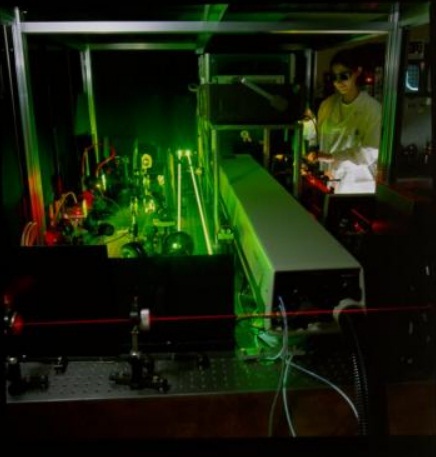Description
Post-compression of sub-10fs pulses has been a major research focus of our team for several years. The first major development concerns the study, design and implementation of a post-compression device on the SE1 channel of the ATTOLab platform’s FAB1-10 laser, enabling pulses of energy up to 8 mJ to be coupled into a 2m-long stretched hollow fiber at the output of which temporal recompression is provided by a series of chirped mirrors. Ultra-short pulses of 3.8 fs with an energy level of 2.5 mJ at 1 kHz have been routinely obtained. POC stability after the fiber is slightly degraded (450 to 500 mrad). This experimental development was supported by extensive simulation work. In particular, a non-linear propagation code for gas-filled hollow fibers was developed by LIDYL’s ATTO Group to simulate spectral broadening and the physical phenomena involved, such as ionization and self steepening[Hergott et al, OPTICS CONTINUUM 2 (11) pp 2348 – 2362 (2023) DOI: 10.1364/OPTCON.492963].

In joint projects with IOGS and LOA, we have also studied post-compression in gas-filled Herriott-type multi-pass cells (MPCs) of 30 fs pulses produced by Titanium-Sapphire lasers. This alternative technique to hollow-fiber post-compression has the particular advantage of a better transmission rate. As part of this work, we have developed a cell that has made it possible to post-compress a pulse from the mJ, 25 fs level to a duration of 5.4fs (Daniault et al., OPTICS LETTERS 46 (20) pp 5264-5267 (2021) DOI:10.1364/OL.442707). We have also investigated the possibility of using such an MPC to perform either XPW or spectral broadening with nonlinear polarization rotation(Kaur et al., Journal of Physics: Photonics, 6(1):015001, (2023). doi: 10.1088/2515-7647/ad078a). These results are of potential interest for the injection of ultra-intense lasers with high temporal contrast.
The work on MPC post-compression was then extended for application to Ytterbium lasers, which from 2024 should gradually replace Titanium-Sapphire lasers at ATTOLab. Compared with Titanium-Sapphire lasers, Ytterbium lasers have the advantage of operating at higher rates and with greater efficiency. However, they cannot deliver such short pulses, and the typical pulse duration of commercial systems is in the range of a few hundred femtoseconds. The post-compression of these pulses is therefore in a different regime from previous work applied to Titanium-Sapphire. We focused on the dimensioning and design of 4 MPCs adapted to the various parameters of the Ytterbium lasers expected at ATTOLab: energy per pulse ranging from 400µJ to 4 mJ, pulse duration varying from 250fs to 450fs and average power between 20 and 80W. Following the modeling and optical design phase, we have set up and tested, in conjunction with members of the ATTO teams, the first two MPCs on 2 Ytterbium lasers, delivered and installed in 2023. The initial results obtained at the end of 2023 are fully in line with expectations: pulse durations of between 20 and 25fs have been measured at the MPC output for input energies ranging from 400µJ to 2mJ, with overall transmission in excess of 80%. As with hollow-fiber post-compression, work and developments on MPCs have been based on simulations using numerical tools developed by the SLIC and ATTO teams


